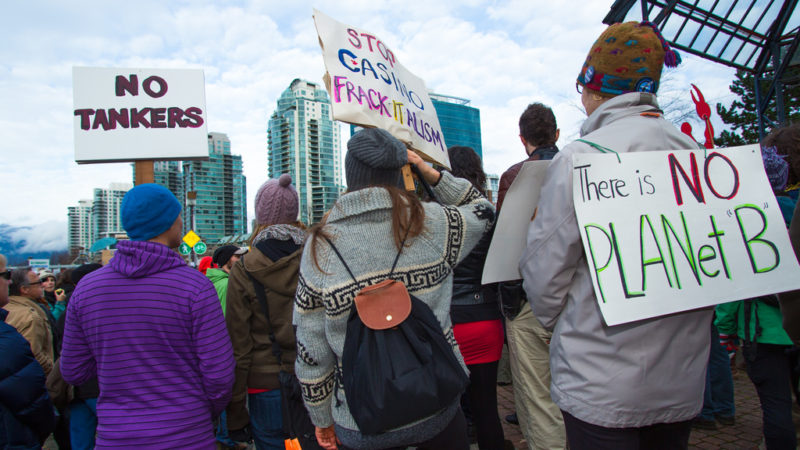The climate movement has to learn from previous struggles if we're to stand a chance of winning. It's time to target our anger - and build hope.

“If we do not change course by 2020 we risk missing the point where we can avoid runaway climate change,” the UN’s Secretary General warned recently. How the climate change movement responds to this challenge – in the UK and elsewhere – will be pivotal.
The state of play
The government has maintained its ban on new onshore wind, approved the planned third Heathrow runway, and been criticised even by the Telegraph for its cuts on home energy efficiency. Subsidies for household solar will end next April. As fuel duty has been frozen now for nine years, petrol is 10% cheaper in real terms than in January 2013.
And despite considerable efforts, only about 3% of councils have taken any steps to divest from fossil fuels. UK climate campaigners need to have much greater impact.
Media coverage such as the well-publicised research report describing “how emissions are driving the Earth into an irreversible hothouse state” could easily lead to people feeling more and more defeatist regarding climate change. Sunday Times columnist Josh Glancy described climate change as “just too big and intangible an issue to cope with on a daily basis”, and quoted a famous TV presenter whose experience of covering it was “it’s been a palpable ratings killer.”
Anger, not defeatism
Research shows that fear reactions to news such as weather disasters usually lead to sadness and avoidance, while anger increases “the desire to be politically active”, and “motivates people to attack and remove the source” of the problem. Jonathon Porrit recently said that green activists “have to burn, with a much more fiery spirit than perhaps we’ve felt able to until now”. Only by rousing more anger will we generate the extra support we need. We need to focus this anger constructively, pushing our targets to make prompt emissions cuts.
History tells us of many situations in which it was people’s anger which led to large-scale popular movements to overcome injustices. These included the groundbreaking 1955 Montgomery bus boycott, which was the key start of the American civil rights movement.
Another historically important source of anger was the inaccessibility of treatment for AIDS in 1980s America. This led to the emergence of the campaign ACT UP, whose slogan was Silence = Death. Their trailblazing actions led ultimately to advances such as same-sex marriage, which were scarcely conceivable at the time.
In their excellent book This is an Uprising Engler & Engler describe the development of the Civil Rights Movement:
“In instances where countless reports, exposés and congressional speeches have failed, non-violent conflict has succeeded in taking disregarded injustices and bringing them to the fore of popular consciousness.”
Anger – with hope
Several studies on people’s reactions to adverts for activism found that feeling anger had a strong impact on motivation to act in line with the advert, provided the anger was accompanied by feeling one could influence the issue. Anger is more likely if the guilty party can be identified.
A campaign could inspire the hope needed to transform anger into action by targeting companies such as banks and others whose chief activity is not fossil fuel use, and which therefore are more likely and able to switch their investments, or cut their emissions, relatively soon.
As described in my recent Ecologist article, brands are anxious to keep a good reputation, and hence are susceptible to popular pressure to clean up their act. Within six months of a mass campaign at bank branches, France’s Friends of the Earth got four huge banks to make significant climate commitments.
Once a campaign had gained significant support, additional targets could be chosen with regard to their susceptibility, and to the strategy best able to grow the campaign.
Communicating to inspire
How can our actions generate the anger required? Bland or unclear names like Rise for Climate, or 350.org, do not arouse the level of passion we need. It is vital that our communications emphasise the criminal responsibility of corporate polluters.
Our communications must express emotions, including anger, consistent with the urgency and gravity of climate change. All features of our communications, including pictures and music, must stimulate anger at ours and our children’s lives being trashed for corporate profit.
And we must also arouse empathy for victims – like the mother whose young sons were killed by Typhoon Haiyan. We must heed the research showing the “importance of coupling emotionally intense ‘impacts’ images with practical guidance on ‘actions’ that can be taken.”
We will not succeed by attracting only a disaffected minority. We need campaign names and slogans which are both memorable, and which resonate with many people.
Tim Root is co-ordinator of Muswell Hill & Hornsey Friends of the Earth. Tim’s work on climate campaigns has previously been published by the Ecologist and other magazines.
Left Foot Forward doesn't have the backing of big business or billionaires. We rely on the kind and generous support of ordinary people like you.
You can support hard-hitting journalism that holds the right to account, provides a forum for debate among progressives, and covers the stories the rest of the media ignore. Donate today.




2 Responses to “Here’s how the climate change movement can win: go after the villains”
Will more climate strikes achieve the breakthrough that we need?
[…] of all, substantial research shows that we need to arouse anger, empathy, and hope in order to counter fatalism. Anger is an action-oriented emotion, and it can be […]
Will More Climate Strikes Achieve the Breakthrough That we Need? - Resilience
[…] of all, substantial research shows that we need to arouse anger, empathy, and hope in order to counter fatalism. Anger is an action-oriented emotion, and it can […]